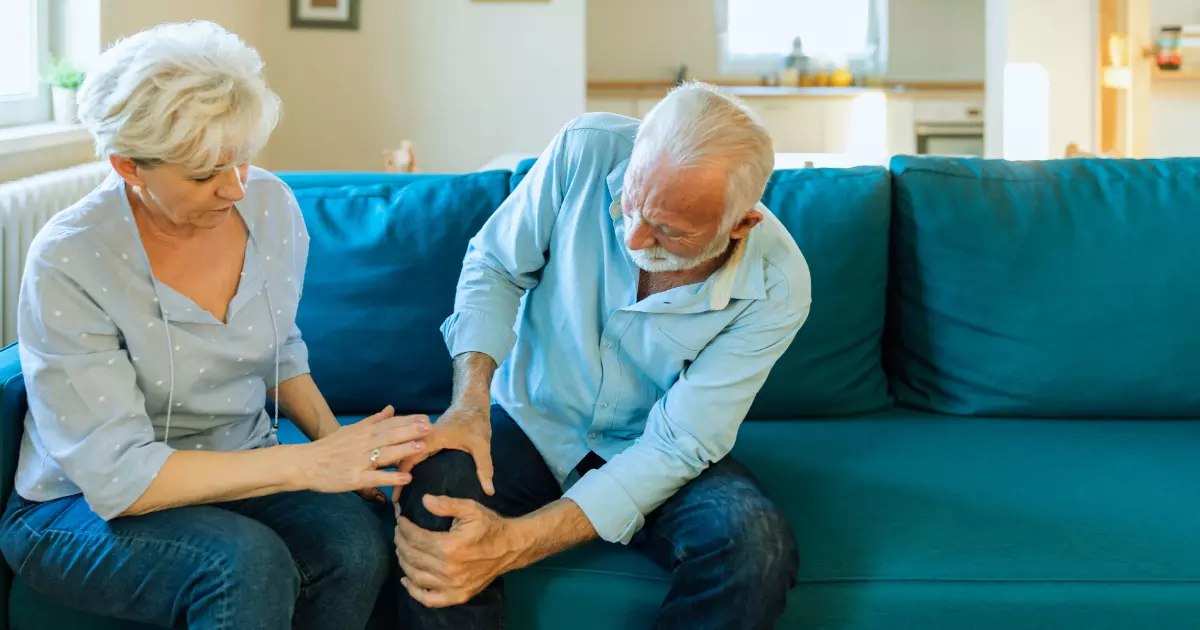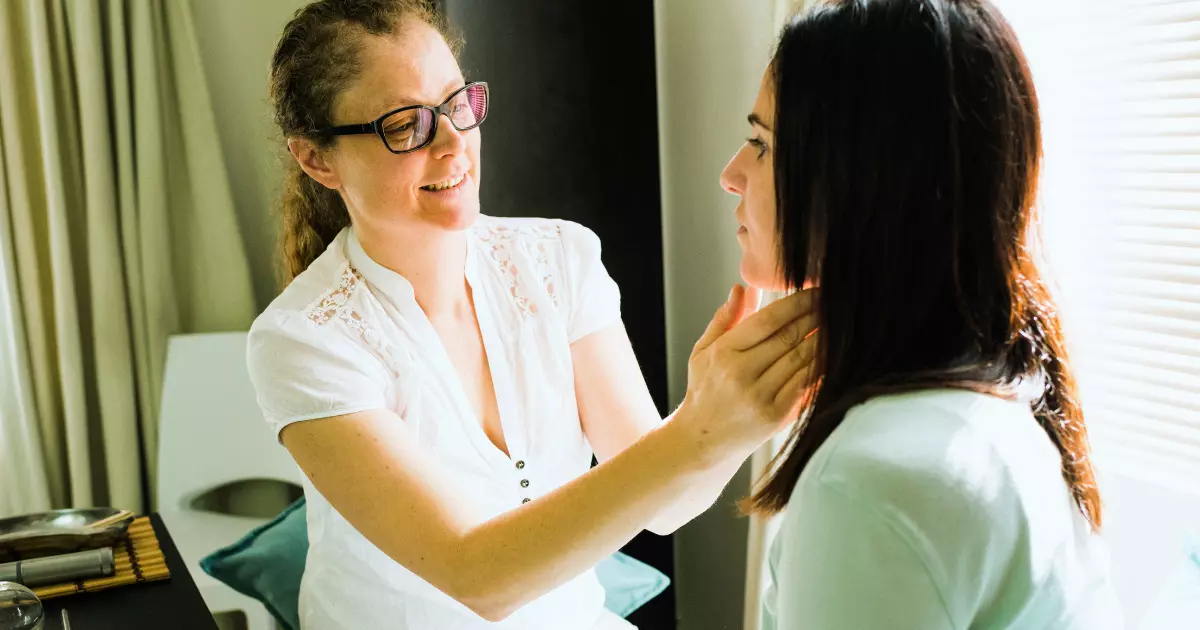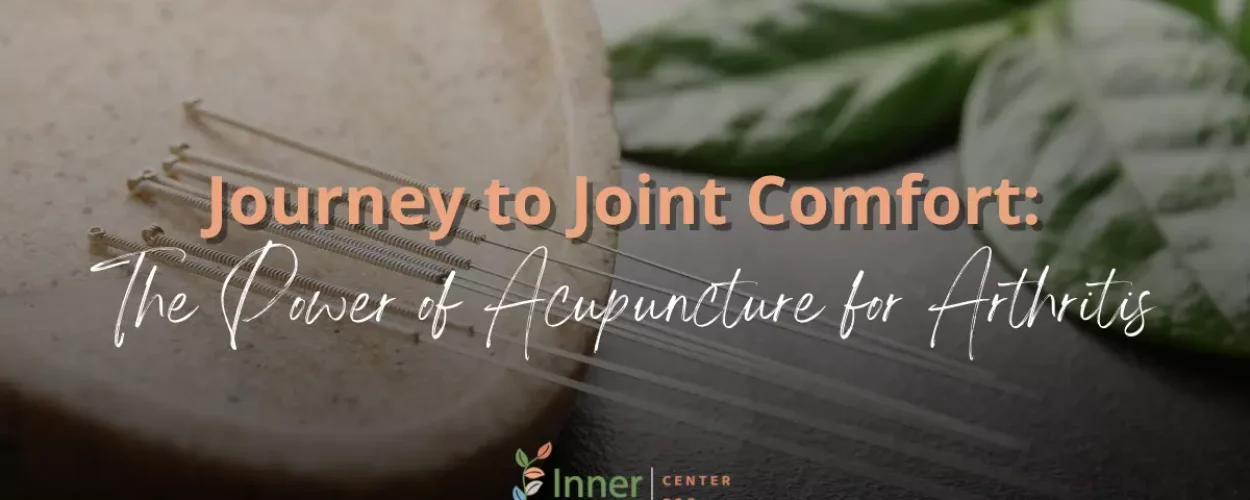Acupuncture for arthritis emerges as an effective treatment, blending the wisdom of traditional acupuncture with scientific evidence.
Anyone with arthritis understands the persistent, aching joint pain. It is a daily reminder, sometimes limiting even the most basic tasks and diminishing the quality of life. The frustration of chronic pain can often feel as heavy as the physical discomfort itself.
You tried everything. From conventional treatments to the latest medications, the relief seems fleeting. The swollen, tender joints often hinder you from living a fulfilling life. Waking up and hoping for a ‘good day’ becomes the norm. But what if there was a method that not just masks the pain but addresses it at its core?
Interested to learn more about acupuncture? Keep on reading as we will answer your questions and offer insights into this practice of acupuncture.
What is Arthritis and What Causes It?
You might heard of arthritis. Maybe a family member has complained about those painful joints or you saw those advertisements for arthritis relief. But what exactly is it?
Arthritis is a broad term that encompasses more than 100 diseases and conditions primarily affecting the joints — the areas where two or more bones meet. The hallmark symptoms of arthritis are joint pain and stiffness. Depending on the specific type, arthritis can also manifest with swelling, redness, and decreased range of motion in the affected joints. Over time, some forms of arthritis can lead to chronic pain and joint damage.
Generally, a combination of genetic, environmental, and lifestyle can contribute to the development of arthritis. the exact cause can vary based on the specific type of arthritis.
Here’s a general overview:
- Wear and Tear: Over time, the cartilage in joints can wear away, leading to osteoarthritis, the most common form of arthritis. Cartilage is a smooth tissue that cushions the ends of bones, allowing joints to move smoothly. As cartilage diminishes, bones can rub against each other, causing pain and stiffness.
- Immune System Dysfunction: In some types of arthritis, like rheumatoid arthritis (RA) and psoriatic arthritis, the body’s immune system mistakenly targets joint tissues, causing inflammation. Over time, this inflammation can lead to joint damage.
- Infections: Certain microbial agents can infect joint tissues, leading to conditions like infectious or septic arthritis. In some cases, like reactive arthritis, joint symptoms can manifest after an infection in another part of the body, such as the digestive or urinary tract.
- Metabolic Causes: Gout is an example of metabolic arthritis. It arises when uric acid crystals accumulate in the joints, leading to painful inflammation. This buildup is often the result of the body either producing too much uric acid or can’t get rid of it efficiently.
- Injuries: Direct trauma or injury to a joint, even if it heals, might increase the risk of developing arthritis in that joint later in life.
- Genetics: Some forms of arthritis have a genetic component, making certain individuals more predisposed based on their family history.
- Environmental Factors: For some arthritis types, environmental factors, such as smoking or exposure to certain types of infections, might play a role in their onset or progression.
- Other Causes: Other underlying diseases and conditions, like lupus or psoriasis, can also lead to arthritis symptoms.
Also, several factors can make individuals more susceptible to developing arthritis:
- Age: The risk of many types of arthritis, including osteoarthritis, rheumatoid arthritis, and gout, increases with age.
- Gender: Some types of arthritis, like rheumatoid arthritis, are more common in women, while others like gout are more common in men.
- Genetics: Having a family member with arthritis increases the chances of developing the condition, pointing to a hereditary factor in some types of arthritis.
- Occupation: Jobs that involve repetitive squatting or bending, such as construction or factory work, can lead to osteoarthritis.
- Obesity: Carrying excess weight puts stress on joints, particularly the knees, hips, and spine. Obese individuals have a higher risk of developing arthritis.
In many cases, a combination of factors contributes to the onset and progression of arthritis. Early diagnosis and tailored treatment are crucial in managing symptoms, preventing joint damage, and maintaining a good quality of life.
What Are Different Types of Arthritis?

These are among the many types of arthritis. Each has its unique causes, symptoms, and treatment strategies. If someone suspects they might have arthritis, they should consult a medical professional for a proper diagnosis and treatment plan.
Osteoarthritis (OA)
Osteoarthritis is a chronic condition and one of the most common types of arthritis. It occurs when the protective cartilage that cushions the ends of bones wears down over time, leading to pain, swelling, and reduced joint mobility. The most common causes include aging, joint injuries, genetics, and obesity. Understanding the symptoms of osteoarthritis and effective management of osteoarthritis is essential for people living with this condition.
Rheumatoid Arthritis (RA)
Rheumatoid arthritis is an autoimmune disorder where the immune system mistakenly attacks the body’s own tissues, primarily targeting the synovium—the soft tissue lining the joints. Rheumatoid arthritis symptoms include joint pain, swelling, and potential joint deformity. The exact cause is unknown, but genetic factors seem to play a role.
Psoriatic Arthritis
This type of arthritis affects some people with psoriasis, a skin condition that shows red patches with silvery scales. It causes joint pain, stiffness, and swelling. The cause is uncertain, but it’s believed to involve genetics, the environment, and a malfunctioning immune system.
Gout
The buildup of uric acid crystals in the joints causes gout, a painful form of arthritis. It usually affects the big toe but can occur in other joints. High levels of uric acid in the blood, are often due to diet, alcohol, certain medicines, and other factors.
Ankylosing Spondylitis
This type primarily affects the spine, leading to pain and stiffness from the neck down to the lower back. The bones of the spine may fuse over time. The exact cause remains unknown, though genetic factors are suspected.
Juvenile Arthritis
Juvenile arthritis, also known as pediatric or childhood arthritis, refers to a group of autoimmune and inflammatory conditions that affect children and adolescents under the age of 16. These conditions involve chronic inflammation of the joints, which can lead to pain, stiffness, and swelling. The exact cause of juvenile arthritis is not fully understood, but it is believed to involve a combination of genetic, environmental, and immunological factors.
Systemic Lupus Erythematosus (Lupus)
Systemic Lupus Erythematosus (SLE), commonly referred to as lupus, is a chronic autoimmune disease that can affect various parts of the body, including:
- Skin
- Joints
- Kidneys
- Heart
- Lungs
- Brain
- Blood cells
Lupus occurs when the immune system mistakenly attacks healthy tissues and organs, leading to inflammation and a wide range of symptoms. The exact cause of lupus is not known, but it is believed to result from a combination of genetic, environmental, and hormonal factors.
Fibromyalgia
Fibromyalgia is a chronic medical condition where there is widespread musculoskeletal pain, tenderness, and heightened sensitivity to pressure. A variety of symptoms include:
- Fatigue
- Sleep Disturbances
- Cognitive Difficulties (often referred to as “fibro fog”)
- Mood disorders.
Infectious Arthritis (Septic Arthritis)
Infectious arthritis, also known as septic arthritis, is a painful and potentially serious condition that involves inflammation of a joint due to an infection. It occurs when bacteria, viruses, or other microorganisms enter a joint and trigger an inflammatory response. This condition can affect people of all ages, and it requires prompt medical attention and treatment.
Reactive Arthritis
Reactive arthritis is a type of inflammatory arthritis that typically develops in response to an infection in another part of the body. The symptoms include joint pain, swelling, stiffness, and inflammation throughout the body. Reactive arthritis can affect both the joints and other organs, such as the eyes, skin, and urinary or gastrointestinal tracts.
How Does Acupuncture for Arthritis Work?
Diving into the realm of Chinese Medicine, acupuncture stands as a time-honored technique, promising relief to those embattled with arthritis pain. But what lies beneath the effectiveness of acupuncture for arthritis? Let’s demystify.
Central to acupuncture’s prowess are acupuncture points, meticulously mapped across the body. When acupuncture needles stimulate it, these points tap into our body’s energy pathways or “Qi” (pronounced “chi”). This essential life energy flows through meridians, akin to highways. Blockages or disturbances in Qi are believed to be the root of ailments. In the context of arthritis, inflammation plays the notorious villain. Acupuncture aims to restore harmony, regulating blood circulation and invoking the body’s natural anti-inflammatory effects. This not only brings pain relief but also rejuvenates the overall functional status of painful joints.
Now, while the ethos of acupuncture is rooted in Traditional Chinese Medicine, modern studies on acupuncture affirm its value. Current evidence suggests that genuine acupuncture, when done by a qualified practitioner, often outperforms sham acupuncture and even some conventional medical treatments for arthritis.
What Are The Benefits of Acupuncture for Arthritis?

Navigating the path of arthritis is a winding journey. But what if there’s a holistic turn to ease the pain? Here are seven benefits that might intrigue you:
Natural Pain Reduction
One of the core effects of acupuncture is its analgesic effects. Many individuals report a notable reduction in pain, especially in symptomatic joints like the knee joint. So, if chronic back pain or pain from osteoarthritis is your constant companion, acupuncture is your ticket to comfort.
Enhanced Mobility
Beyond pain relief, acupuncture for osteoarthritis has shown improvements in functional status. That means better mobility and fewer stiff mornings! The process targets the spinal cord and other pivotal areas, optimizing the body’s natural healing modalities.
Reduced Inflammation
Arthritis often brings along its pesky friend–inflammation. Observational studies highlight acupuncture’s role in modulating inflammatory markers. So, every needle prick is like a silent whisper, telling your body to relax and repair.
Fewer Side Effects
While Non-Steroidal Anti-Inflammatory Drugs (NSAIDs) and antirheumatic drugs can offer relief, they sometimes come with adverse effects. When a qualified practitioner performs acupuncture, it presents fewer risks, making it an attractive complementary therapy.
Improved Blood Flow
It is common knowledge that acupuncture enhances circulation, promoting better blood flow. This not only aids in healing but also brings a glow of vitality, especially important for chronic disease sufferers who often feel fatigued.
Natural Stress Relief
Arthritis is not only good for physical. It is also mentally taxing. Acupuncture offers a dual benefit – while addressing pain, it also calms the mind. Many report a serene sense of relaxation post-session, making it a holistic medicine for body and soul.
Harmonious Balance
Beyond the physical, there’s an emotional and energetic side to arthritis. Acupuncture, in its true essence, seeks to balance the body’s energy. This real acupuncture effect translates to better emotional well-being and a rejuvenated spirit.
What to Expect During Your First Acupuncture Session?
Whether you’ve exhausted the avenues of Western Medicine or are curious about alternative therapy, there’s a calming serenity awaiting you at an acupuncture clinic. Let’s unwrap the experience, step-by-step.
Pre-Session Preparations
Before your acupuncture treatment, it is wise to have a light meal—neither arriving too full nor famished. Steer clear of caffeine and alcohol. Jot down any pain or symptom patterns to discuss with your acupuncture practitioner. Dress comfortably. Loose clothing can help your practitioner access acupuncture point locations easily.
The Session
Once you’re settled, your qualified practitioner will gauge your clinical conditions, focusing on your arthritis pain and any related issues. As they begin, you’ll feel the gentle insertion of disposable needles. Contrary to some beliefs, this process rarely hurts—most describe it as a slight pinch where warmth or tingling follows.
These sensations stem from the effects of acupuncture on blood flow and the nervous system.
After all the needles are in place, relax! This is your time. Breathe deeply, let the world fade, and immerse yourself in the symphony of your body healing. The needles, sometimes combined with a mild electric current or laser acupuncture, work their magic for 20 to 30 minutes.
Post-Session Vibes
Once the session wraps, you might feel a flood of relaxation or a surge in energy— both are normal. Remember to drink plenty of water to aid in flushing out any toxins. Some people experience slight soreness at the acupuncture point locations, similar to post-physical therapy feelings. This is a sign your body is adjusting and healing. However, adverse events are rare, especially under the care of a seasoned practitioner.
For those living with chronic knee pain, swollen joints, or the nuances of knee osteoarthritis, acupuncture offers a bridge to pain relief and balance. It is more than just needles. This traditional Chinese medicine is a dance of energy, a melding of ancient wisdom and modern understanding, leading you on your journey to joint comfort.
How to Choose an Acupuncturist?

The world of acupuncture for arthritis beckons with promises of pain relief and restored mobility. But here’s the twist: not all acupuncturists are created equal. Choosing a local acupuncturist is akin to ensuring your journey to joint comfort is safe, effective, and genuinely therapeutic.
Why Opt for a Certified Professional?
Acupuncture, when intertwined with medical care, proves to offer enhanced efficacy in acupuncture treatment for arthritis. But, the true acupuncture effect depends on the hands that wield those needles. Certified professionals are trained in anatomy, acupuncture points, and the nuanced art of acupuncture therapy. They understand the intricacies of the knee joint, the causes of chronic back pain, and the role of treatment modalities in offering symptom relief.
Questions to Pop:
- What’s your certification and where did you receive your training?
- How many arthritis patients have you treated? Any special focus on joint osteoarthritis or acupuncture for pain relief?
- Do you combine acupuncture with other therapies like herbal remedies?
- How do you ensure the procedure is safe, avoiding adverse effects?
Red Flags to Dodge:
- No certification or hesitant to show credentials.
- Unfamiliarity with modern trials of acupuncture or recent advancements.
- Using non-disposable, acupuncture with metal needles.
- Promising instant, miracle-like improvements in pain.
Unlock The Joint Joy Of Acupuncture for Arthritis
In a world awash with medical care options, acupuncture stands out as an integrative medicine choice, a bridge between conventional care and alternative remedies. Whether you’re diving into the trials of acupuncture out of curiosity or as an active treatment choice, the journey promises a blend of ancient wisdom and contemporary understanding.
So, considering acupuncture prices and the potential benefits, isn’t it time to give those needles a shot? Remember, it is not only about the pain; it is about embracing a life with fewer aches and more smiles! Contact us now to schedule your session.


